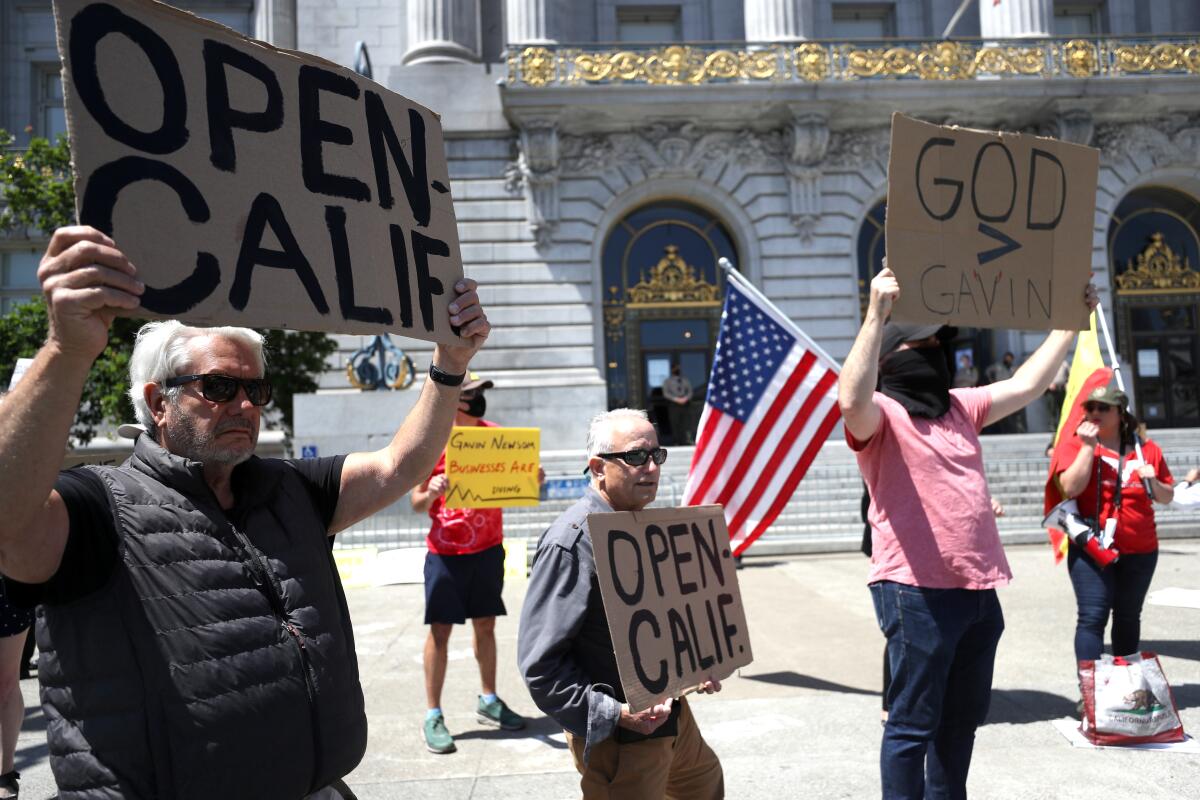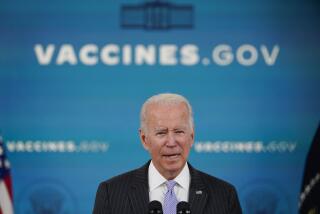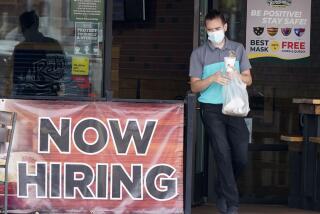Jobs picture will get worse before improving, Treasury secretary says

WASHINGTON — With the coronavirus outbreak ravaging the U.S. economy and joblessness reaching Depression-era heights, Treasury Secretary Steven T. Mnuchin acknowledged Sunday that things were “probably going to get worse before they get better,” but he predicted a rebound later in the year.
And as the outbreak’s repercussions widened, Vice President Mike Pence’s office denied Sunday evening that he was in quarantine, after multiple news reports said the vice president was self-isolating. Last week, a spokeswoman for Pence — Katie Miller, wife of senior White House aide Stephen Miller — tested positive for the coronavirus.
Spokesman Devin O’Malley said the vice president, who heads the administration’s coronavirus task force, planned to be at the White House on Monday and said he had repeatedly tested negative for the virus.
Sunday also brought word that a widely watched new projection indicated the U.S. death toll from the pandemic would reach 137,000 by early August, and a leading public health expert flatly contradicted President Trump’s contention last week that the virus would subside on its own, without a vaccine. Other infectious-disease specialists, meanwhile, warned that a too-swift reopening of businesses and public spaces would ignite new hot spots.
After business shutdowns brought the economy to a near-halt in April, figures out last week put the jobless rate at 14.7%, the highest level since the 1940s. Mnuchin, interviewed on “Fox News Sunday,” was asked whether the country was looking at a “real” unemployment rate — including those who are underemployed — of 25%.
“We could be,” he said, predicting a “very, very bad second quarter.” But the Treasury secretary said he expected improvement in the third and fourth quarters, and that “next year is going to be a great year.”
White House economic advisor Kevin Hassett also predicted employment would hit a “trough” in May or June, with unemployment rates “north of 20%.” Appearing on CBS’ “Face the Nation,” he called the coronavirus crisis the biggest negative shock to the job market since World War II.
Pushed by Trump, most governors have begun lifting virus-triggered shutdowns, and Mnuchin said reopenings were the only way to prevent long-term damage to the economy. Public health experts, though, repeated warnings that only robust testing and contact tracing could prevent cases from flaring up again.
“The bottom line is that we’re not diagnosing enough cases, and we’re not tracing their contacts,” said Thomas Inglesby, who directs Johns Hopkins University’s Bloomberg School of Public Health.
For many, nervousness over reopening the country was amplified when the White House announced two cases within its walls and a resulting ramping up of precautions. As well as Pence spokeswoman Miller, a personal valet to the president tested positive last week.
In his CBS interview, Hassett said it was “scary to go to work” knowing the virus had appeared in the West Wing. The positive tests spurred three senior doctors on the White House coronavirus task force to protectively isolate themselves: the head of the Centers for Disease Control and Prevention, Robert Redfield; Food and Drug Administration Commissioner Stephen Hahn; and top infectious-disease specialist Anthony Fauci, who said he would observe a “modified quarantine.”
Asked about Trump’s prediction Friday that “this is going to go away without a vaccine,” Inglesby said on “Fox News Sunday” that the coronavirus would remain a “big problem in this country [and] around the world until we have a vaccine.”
Even with infections and death rates slowing in some states, such as New York and New Jersey, public health experts are projecting tens of thousands more deaths nationwide in coming months. On Sunday, the U.S. death toll approached 80,000.
Dr. Christopher Murray, director of the University of Washington’s Institute for Health Metrics and Evaluation, said on “Face the Nation” that a new projection indicated the nationwide fatality count would reach 137,000 by Aug. 4.
Other public health experts warned that the infection rate in the United States, now estimated at 5% to 15%, could eventually grow to 60% or 70%, with no plan in place to cope with cascading consequences.
“We have to understand that we’re riding this tiger, we’re not directing it,” said Michael Osterholm, director of the Center for Infectious Disease Research and Policy at the University of Minnesota, interviewed on NBC’s “Meet the Press.”
Speaking on the same program, Jeffrey Shaman of Columbia University’s Mailman School of Public Health said he expected a rebound in coronavirus cases as states proceeded with “patchwork” reopenings.
He said much more could have been accomplished in the two months since the outbreak began in earnest in the United States.
“We have not used the eight weeks as well as we could have, unfortunately,” Shaman said. “It would have benefited enormously from consistent messaging and a concerted, consolidated plan of attack for actually aggressively and proactively dealing with this virus.”
As the administration and Congress weigh another economic relief package — something Trump said last week he is in “no rush” to see enacted — the White House is calling for a payroll tax cut, a move opposed by Democrats and some Republicans.
“We are absolutely pushing for the payroll tax cut,” Mnuchin said on Fox, calling it a means of “delivering money to American public and business in a very effective way.”
The Treasury secretary also threw cold water on the idea of supplemental funding for states whose budgets have been devastated by the virus, including California, which faces the worst deficit in state history — $54.3 billion, according to an analysis released last week by advisors to Gov. Gavin Newsom.
Trump has portrayed budget shortfalls, particularly in blue states, as the fault of state administrations rather than a result of the virus. Mnuchin appeared to echo that view, saying Sunday, “We’re not going to do things just to bail out states that were poorly managed.”
Hassett did not rule out additional aid for states and local governments in the next relief package, although he said a decision now would be “premature” until the economic effects of the current wave of reopenings were better understood.
“We’ve got a bunch of economies around the country and around the world starting to turn the lights back on,” he said on CNN’s “State of the Union.” The administration, he said, was “watching to see what happens to economic activity and the path of the disease.”
More to Read
Sign up for Essential California
The most important California stories and recommendations in your inbox every morning.
You may occasionally receive promotional content from the Los Angeles Times.










